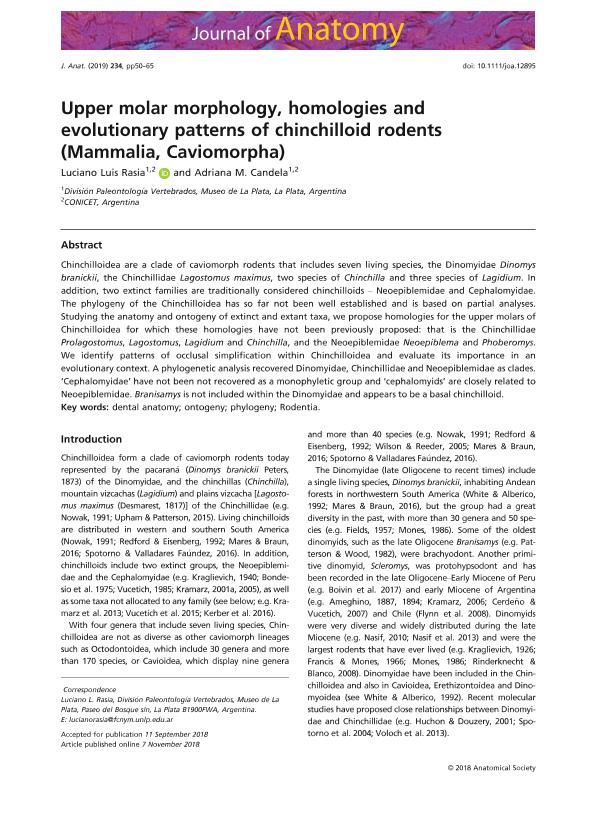Artículo
Upper molar morphology, homologies and evolutionary patterns of chinchilloid rodents (Mammalia, Caviomorpha)
Fecha de publicación:
01/2019
Editorial:
Wiley Blackwell Publishing, Inc
Revista:
Journal of Anatomy
ISSN:
0021-8782
Idioma:
Inglés
Tipo de recurso:
Artículo publicado
Clasificación temática:
Resumen
Chinchilloidea are a clade of caviomorph rodents that includes seven living species, the Dinomyidae Dinomys branickii, the Chinchillidae Lagostomus maximus, two species of Chinchilla and three species of Lagidium. In addition, two extinct families are traditionally considered chinchilloids – Neoepiblemidae and Cephalomyidae. The phylogeny of the Chinchilloidea has so far not been well established and is based on partial analyses. Studying the anatomy and ontogeny of extinct and extant taxa, we propose homologies for the upper molars of Chinchilloidea for which these homologies have not been previously proposed: that is the Chinchillidae Prolagostomus, Lagostomus, Lagidium and Chinchilla, and the Neoepiblemidae Neoepiblema and Phoberomys. We identify patterns of occlusal simplification within Chinchilloidea and evaluate its importance in an evolutionary context. A phylogenetic analysis recovered Dinomyidae, Chinchillidae and Neoepiblemidae as clades. ‘Cephalomyidae’ have not been not recovered as a monophyletic group and ‘cephalomyids’ are closely related to Neoepiblemidae. Branisamys is not included within the Dinomyidae and appears to be a basal chinchilloid.
Palabras clave:
Dental Anatomy
,
Ontogeny
,
Phylogeny
,
Rodentia
Archivos asociados
Licencia
Identificadores
Colecciones
Articulos(CCT - LA PLATA)
Articulos de CTRO.CIENTIFICO TECNOL.CONICET - LA PLATA
Articulos de CTRO.CIENTIFICO TECNOL.CONICET - LA PLATA
Citación
Rasia, Luciano Luis; Candela, Adriana Magdalena; Upper molar morphology, homologies and evolutionary patterns of chinchilloid rodents (Mammalia, Caviomorpha); Wiley Blackwell Publishing, Inc; Journal of Anatomy; 234; 1; 1-2019; 50-65
Compartir
Altmétricas




